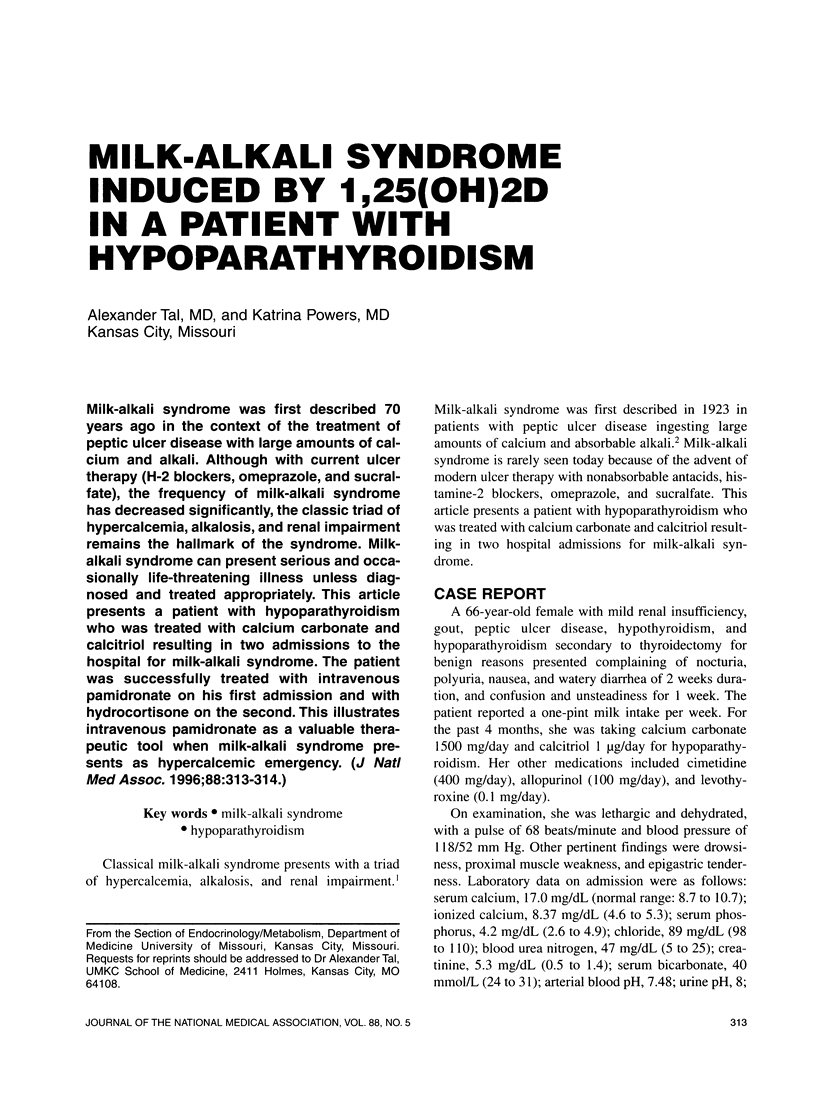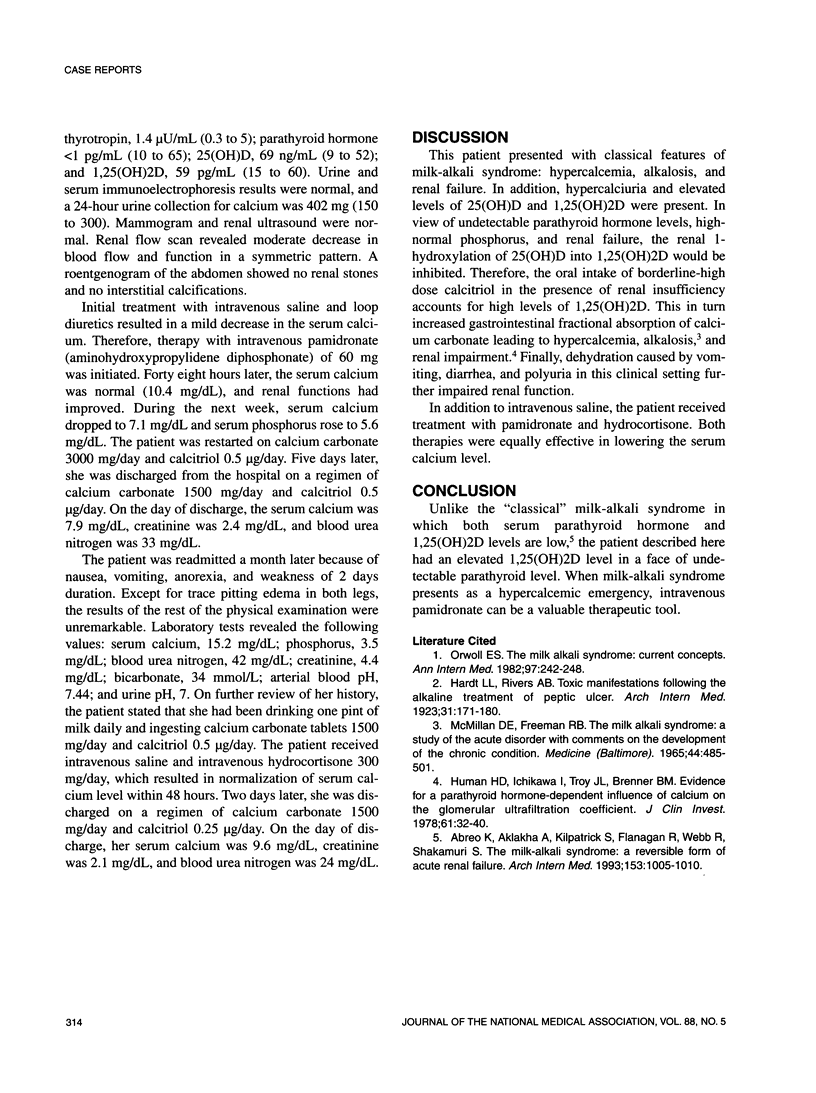Abstract
Milk-alkali syndrome was first described 70 years ago in the context of the treatment of peptic ulcer disease with large amounts of calcium and alkali. Although with current ulcer therapy (H-2 blockers, omeprazole, and sucralfate), the frequency of milk-alkali syndrome has decreased significantly, the classic triad of hypercalcemia, alkalosis, and renal impairment remains the hallmark of the syndrome. Milk-alkali syndrome can present serious and occasionally life-threatening illness unless diagnosed and treated appropriately. This article presents a patient with hypoparathyroidism who was treated with calcium carbonate and calcitriol resulting in two admissions to the hospital for milk-alkali syndrome. The patient was successfully treated with intravenous pamidronate on his first admission and with hydrocortisone on the second. This illustrates intravenous pamidronate as a valuable therapeutic tool when milk-alkali syndrome presents as hypercalcemic emergency.
Full text
PDF

Selected References
These references are in PubMed. This may not be the complete list of references from this article.
- Abreo K., Adlakha A., Kilpatrick S., Flanagan R., Webb R., Shakamuri S. The milk-alkali syndrome. A reversible form of acute renal failure. Arch Intern Med. 1993 Apr 26;153(8):1005–1010. [PubMed] [Google Scholar]
- McMillan D. E., Freeman R. B. The milk alkali syndrome: a study of the acute disorder with comments on the development of the chronic condition. Medicine (Baltimore) 1965 Nov;44(6):485–501. doi: 10.1097/00005792-196511000-00002. [DOI] [PubMed] [Google Scholar]
- Orwoll E. S. The milk-alkali syndrome: current concepts. Ann Intern Med. 1982 Aug;97(2):242–248. doi: 10.7326/0003-4819-97-2-242. [DOI] [PubMed] [Google Scholar]


